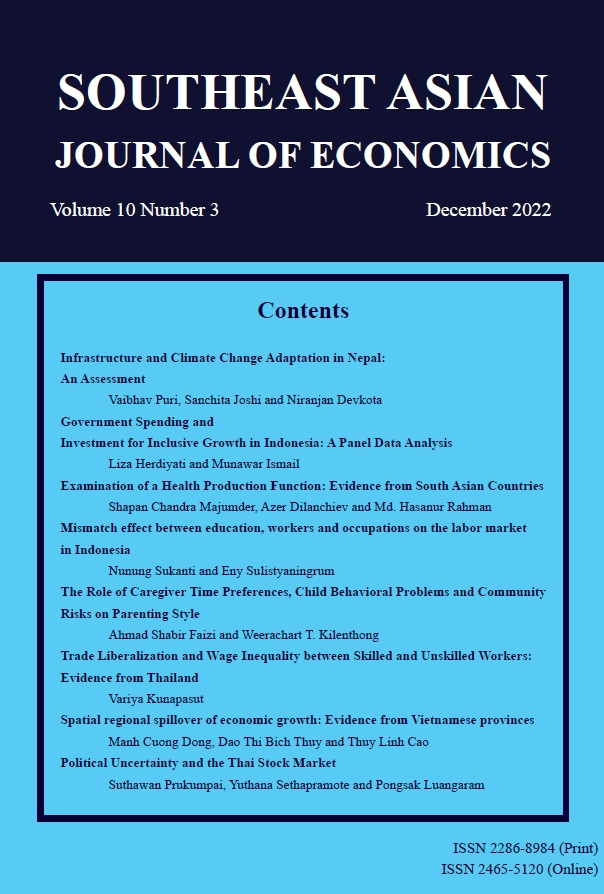Infrastructure and Climate Change Adaptation in Nepal : An Assessment
Keywords:
Climate change adaptation, rural farmers, rice crops, infrastructure, NepalAbstract
Transport and infrastructure determine the path of a nation’s economic development by enhancing productive capacity, creating urban agglomerations, enabling access to potent resources and promoting migration of labor for sustenance and livelihoods. In light of the above argument, the objective of this paper is to assess the importance of infrastructure in achieving sustainable development and climate change adaptation in Nepal. Pacing toward generating higher growth, the environmental impact of constructing core infrastructure facilities often goes amiss, which requires constant evaluation. Evident from the experience of Asian economies, the role and impact of developing roadways, communication networks and energy sources on sustaining growth, reduction in poverty, access to markets and increasing farm incomes emerge significant. The study investigates the impact of infrastructure on climate change adaptation using primary data collected from 773 farmers spread across seven districts in Nepal during January and February 2017. The paper provides a descriptive analysis of household demographics, climate change adaptation and transport infrastructure based on the collected responses. Further, the logistical regression-based econometric model is constructed based on the preceding analysis. The preliminary findings reveal a positive and significant relationship between access to infrastructure and incentive to undertake climate change adaptation. Gender of the farmer and the extent of climate adaptation are significantly interlinked. More importantly, the likelihood and significance of climate change adaptation are 2.7 times higher with lowering of distance from a road network and 6 times higher with availability of loans for farming. Nepal needs to focus more on developing resilient and more climatological balanced infrastructure along with stable financing, prescriptions for which will be provided in the concluding section of the paper.
Downloads
Published
How to Cite
Issue
Section
License

This work is licensed under a Creative Commons Attribution-NonCommercial-NoDerivatives 4.0 International License.
The submission of a manuscript implies that the paper is an original work and has not been published elsewhere. The author(s) authorize the journal to reproduce or distribute the paper in printed or other electronic forms.







